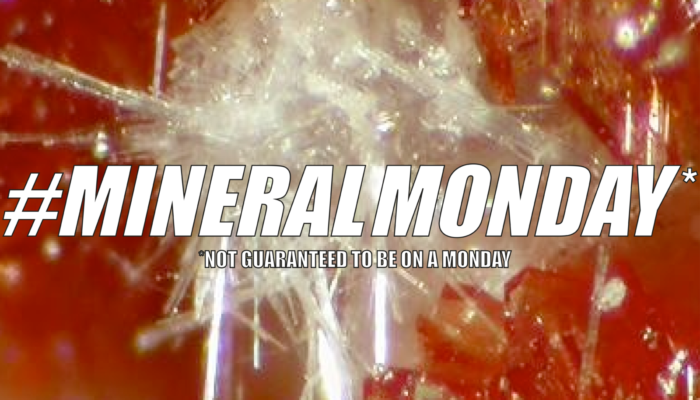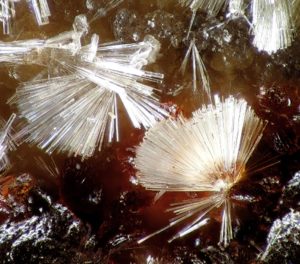
#mineralmonday: your weekly* dose of obscure mineralogy, every Monday** [*not guaranteed; **or possibly Tuesday-Sunday]
What is it? Tiptopite: K2Na1.5Ca0.5Li3Be6(PO4)6(OH)2•(H2O)
What’s it made of? Take a deep breath and recite after me: potassium, sodium, calcium, lithium, beryllium, phosphorus, oxygen and water (H2O).
Is it pretty? Yes, it’s a beautiful fibrous mineral. You wouldn’t put it on jewelry though, or even in your pocket, or you’ll end up with needles and dust.
Wikipedia defines ‘tip top’ as ‘a slang phrase which means of the highest order or excellent’. Is this true for this mineral? Not really, it doesn’t have any real use (we are more interested in the minerals that it is associated with, like beryl), is only found in one place (the ‘Tip Top’ mine in South Dakota), and only in some isolated areas in that mine. This mine was opened during world war 2 for strategic reasons, but then shut down again in the 1950s.
Strategic mining you say? Presumably this was for mining dragon glass? Or maybe I’m mixing up my wars. Yes you are thinking of an earlier war. Dragons and white walkers were long extinct by the 1950s. This particular mine was for beryllium (the Be in the formula).
That sounds berylliant. What’s it for? Nothing fun, unfortunately. Beryllium has a useful property of being a neutron emitter and an alpha particle absorber. This makes it really useful as part of the triggering device of thermonuclear weapons. It also makes beryllium quite difficult to buy…
Is there a silver lining? Nope! Beryllium even has a couple of conditions named after it: berylliosis and acute beryllium poisoning. Luckily it’s hardly ever used these days, and the risks are well known.
It seems calling it ‘tip top’ was a little optimistic…
Do you have a favourite obscure mineral? Want to write about it? Contact us and give it a go!


